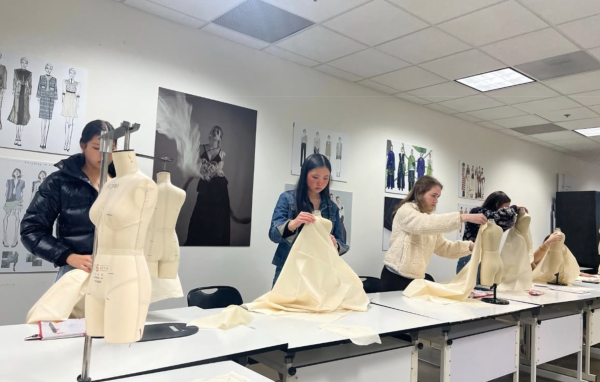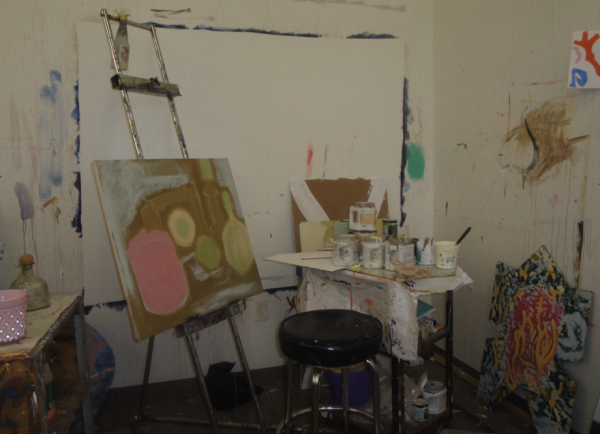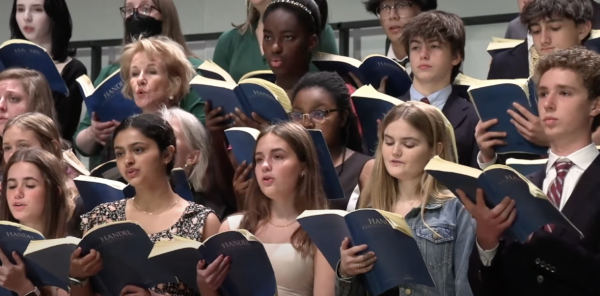Origami artist teaches math, art classes
While first and foremost a painter, artist Alex Soukas also has a talent for origami. For the past two years, he has given origami demonstrations to Westminster students, sharing his ideas with both art and math classes.
Soukas studies Classical Painting at Studio Incamminati in Philadelphia. Although his primary interest, and his official profession, is painting, he began studying origami at a young age. When he has only a teenager, his work was featured in the Fitchburg Art Museum exhibit, On the Edge: Contemporary Origami.
“It wasn’t until about ten years ago that I actually started reading books and finding resources on origami that were a little more serious,” said Soukas. “I came across a publication by this guy, Michael Lafosse, and I was really kind of enamored with what he was doing with his work.” In 2006, Soukas had the opportunity to meet Lafosse, who has an origami studio in Haverhill, Massachusetts.
“[I] saw what he was doing, and the importance of what he was trying to do, and shortly after that, I was studying papermaking with him,” he said. “From there, it just became this bizarre side obsession in my life… My primary focus is painting, and I’m an artist, first and foremost, but I just have this really intense hobby.”
That hobby has become a major point of interest, particularly at Westminster. Not only has Soukas given presentations to a variety of different art classes such as Drawing and Painting and Art History, but he has also held origami demonstrations in math classes like Geometry. Soukas originally came into contact with the school through art teacher Lauren Sleat.
“I actually used to be his tutor when he was 16 years old,” Sleat said. “He’s gone on to do amazing things professionally, and does talks all over the country, and teaches, and he’s a part of the Boston School of Painting.”
Sleat believed that Soukas’s origami might have an application in the classroom, and she suggested that he come to present at Westminster.
“Lauren dropped my name, my work, and my website, and apparently they thought I was interesting,” explained Soukas. “So, they invited me down. I guess they liked me last year, so they said, ‘Come again!’ to which I said, ‘Great!’”
Of course, the students love him, too.
“I thought the origami presentation was really interesting,” said sophomore Allie Jeffay, a student in one of the math classes that Soukas visited. “It was great to do some hands-on activities. Also, it didn’t hurt that it was kind of like a day off from math.”
Soukas adapted his demonstration to fit every class he presented to.
“He did an art history lecture for my Art History class,” Sleat said. “He did value studies with Portfolio, too. It’s really nice to have a different set of eyes on your own work, and it’s great to hear someone else’s voice. I’ve heard rave reviews from everybody.”
Clearly, over the years, origami has developed into more than just a pastime for Soukas.
“[Origami] has become sort of bizarre, in that it has evolved into something of a pseudo-profession,” said Soukas. “I’ve actually made money at doing this stuff. I didn’t plan on it being that way, but I was developing a body of work, and there was an online community on Flickr, which is a photo-sharing website, about ten years ago, when origami tessellations, the geometric folding, was a new field of study. A bunch of people were using Flickr as a social media tool for sharing and learning how to do new things with it.”
Flickr isn’t the only social media tool that Soukas uses. His origami website reveals the full extent of his talent. Soukas actually makes his own paper for origami, one of the many skills he learned while working with Lafosse. In fact, Soukas is currently working on his own publication, Unfolding: An Origami Renaissance, which is in pre-production.
Soukas doesn’t just excel at art, either. As a speaker at numerous schools, universities, and public and private functions, he works in other fields as well. In many of these presentations, Soukas discusses the practical uses of origami.
“He related origami to other real-world applications,” said Jeffay. “Obviously, he related it to math, what with the tessellations, but he also related it to topics like healthcare.”
This manner of connecting art to the real world is an excellent way of encouraging young artists, whether by highlighting the relevance of their dreams for the future or by explaining the way that their interests relate to and influence the world around them. Soukas believes that it’s important for high school students to link origami, often viewed as merely a trivial pastime, with the professional world.
And, as for the artist’s plans for the future?
“Finish school, you know, and then I’d like to continue teaching at the school for some time,” says Soukas, who is currently enrolled in the full time professional program at Studio Incamminati. “I guess I just want to do what all naïve art students hope to do, which is graduate, and make a living off of painting and teaching, so… that’s the goal.”



